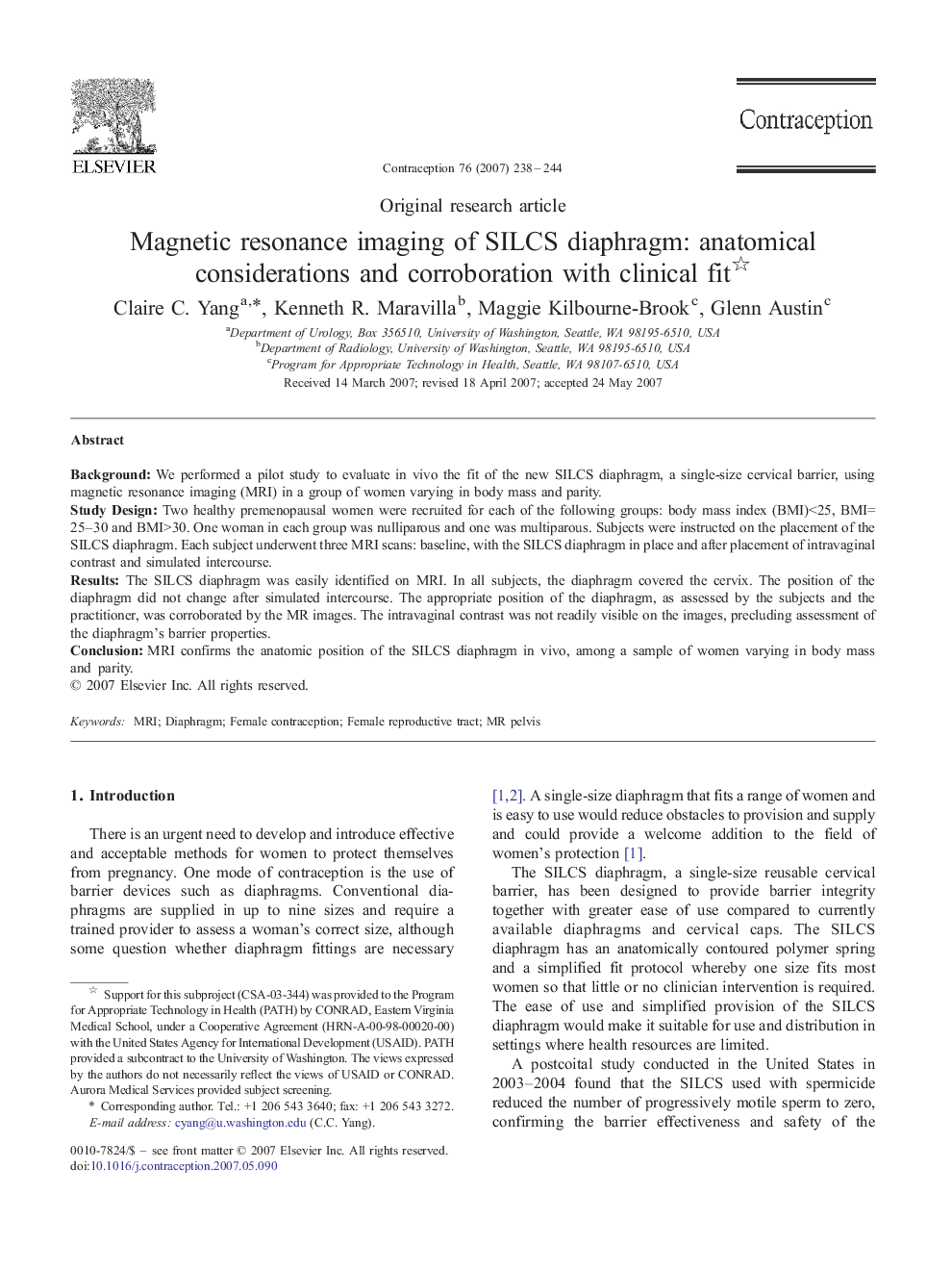| Article ID | Journal | Published Year | Pages | File Type |
|---|---|---|---|---|
| 3915952 | Contraception | 2007 | 7 Pages |
BackgroundWe performed a pilot study to evaluate in vivo the fit of the new SILCS diaphragm, a single-size cervical barrier, using magnetic resonance imaging (MRI) in a group of women varying in body mass and parity.Study DesignTwo healthy premenopausal women were recruited for each of the following groups: body mass index (BMI)<25, BMI=25–30 and BMI>30. One woman in each group was nulliparous and one was multiparous. Subjects were instructed on the placement of the SILCS diaphragm. Each subject underwent three MRI scans: baseline, with the SILCS diaphragm in place and after placement of intravaginal contrast and simulated intercourse.ResultsThe SILCS diaphragm was easily identified on MRI. In all subjects, the diaphragm covered the cervix. The position of the diaphragm did not change after simulated intercourse. The appropriate position of the diaphragm, as assessed by the subjects and the practitioner, was corroborated by the MR images. The intravaginal contrast was not readily visible on the images, precluding assessment of the diaphragm's barrier properties.ConclusionMRI confirms the anatomic position of the SILCS diaphragm in vivo, among a sample of women varying in body mass and parity.
